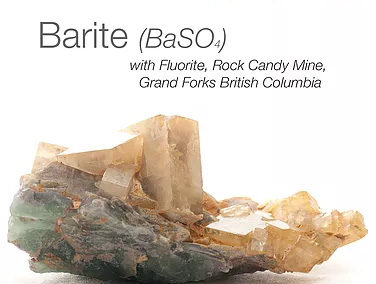Tetrahedrite (February 1st, 2016)
Mineral Monday! This week we have Tetrahedrite from the Payne Mountain Mine near Sandon, British Columbia.
This site was discovered by two men with unusual pasts in 1891. The first was a French-Canadian tightrope walker named Eli Carpenter, and the second was an Irish Immigrant then living in Tennessee called Jack Seaton.
They came to British Columbia in search of their fortune, like so many others at the time. They spent many months wandering the area to no avail, but towards the end of the summer, they climbed Payne Mountain (an arduous journey!), and found metallic ore glinting in the sunlight.
They staked the ground there and then (1600ft x 500ft), and took two samples to have them assayed for mineral content. The mineral they had seen was Galena, and when it was measured, it contained a lot of silver – 170 ounces to be exact. This was Carpenters sample. The second sample, collected by Seaton, only assayed 20 ounces silver, and because of the lower grade, Seton lost interest and abandoned the claims to Carpenter.
Carpenter then entered into a secret agreement with another Prospector, E.A. Bielenberg of Nelson, but the deal was overheard by a local inn keeper who informed Seaton of the deceit.
Seaton found four new partners, called the ‘Noble Five’, and secretly went back up Payne Mountain and staked 21 additional claims, outflanking Carpenter. This story got out, and the area was flooded with prospectors who staked the remaining ground in a frenzy. Over the next century, the area earned over $30billion from the silver, copper and lead that was extracted (with over 1million ounces of silver per year from Payne Mountain while it was in operation).
But what of the two men? Carpenter sold his shares in the mine early on, tempted by the easy money. Alas it was a pittance compared to what it was eventually worth, and he ended up running a pack train that was used to take ore out of the very site he discovered.
Jack Seaton was joined by his younger brother, who subsequently died within two months of arriving in British Columbia. Seaton then decided to sell his shares, again for a small sum, and returned to Tennessee with hist brothers body. He then also became sick and bedridden, and died within a year of his return.
Tetrahedrite is a mineral known as a ‘sulfosalt’, and commonly forms in veins of lead and silver. It is relatively common, but until recently had no commercial use. However, a California-based company has announced plans to use the mineral in a device that will turn heat into electricity, and that it is more efficient and less toxic than other manufactured thermoregulators.
Specimen Information
Collection: UBC Geological Museum Collection
Accession #: 711
Primary Mineral: Tetrahedrite
Secondary Mineral: n/a
Site Locality: Payne Mine
Location: Sandon, British Columbia
Special Features: n/a















